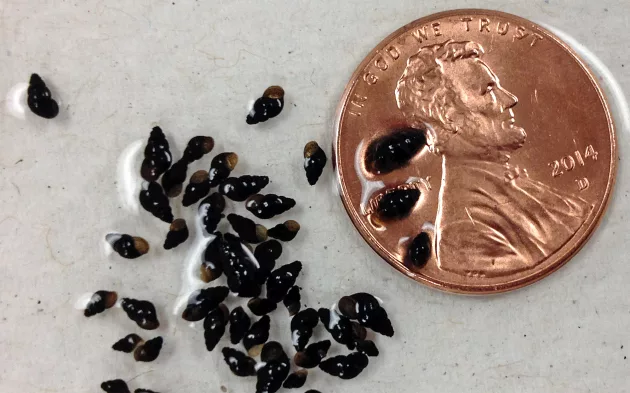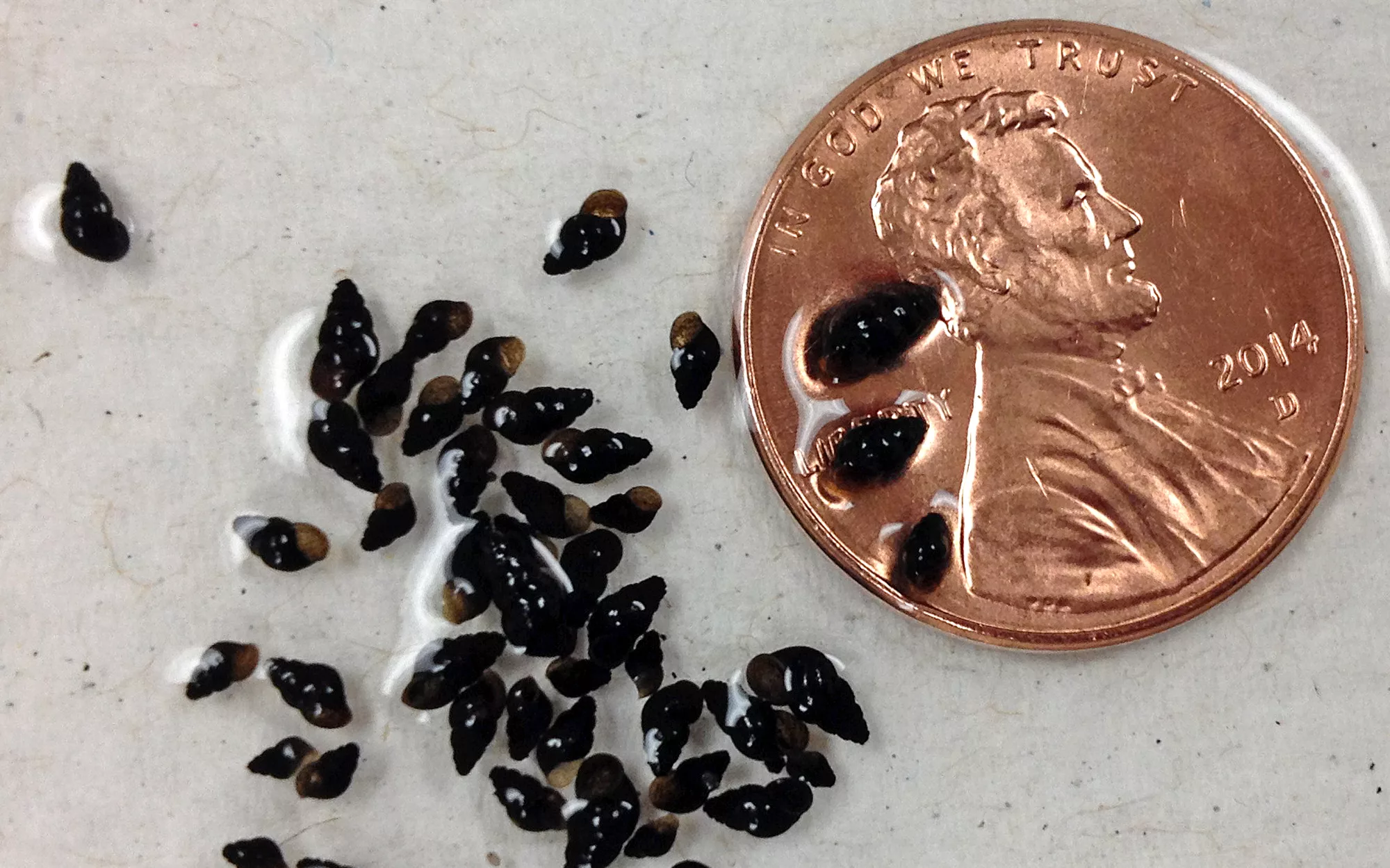
In this photo taken Wednesday, Feb. 11, 2015, dozens of a tiny destructive New Zealand mudsnails are displayed with a penny to show the scale of the one-eighth of an inch creature at a lab in Bellevue, Wash. Scientists are turning to environmental DNA, or eDNA, an emerging surveillance tool that detects the presence of an organism by analyzing cellular material such as urine, hair, feathers or skin cells that are left behind in the environment. From Asian carp in the Great Lakes basin to salamanders in Kentucky to great crested newts in the United Kingdom, the tool is helping biologists look for reclusive or rare imperiled species, monitor unwanted creatures or gauge the overall biodiversity of a lake or stream. (AP Photo/Elaine Thompson)
For the first time, a small, invasive aquatic snail has been discovered at the Lake Sonoma Fish Hatchery. The New Zealand mudsnails were recently found during routine monitoring of an intake pipe that draws water from Lake Sonoma. The U.S. Army Corps of Engineers uses the water pipe for its coho salmon and steelhead trout broodstock program. The discovery is causing concern about releasing the young fish into the Russian River Watershed later this year. The snails have been found in other waterways state and nationwide.


